Limits to Growth
(2016 – )
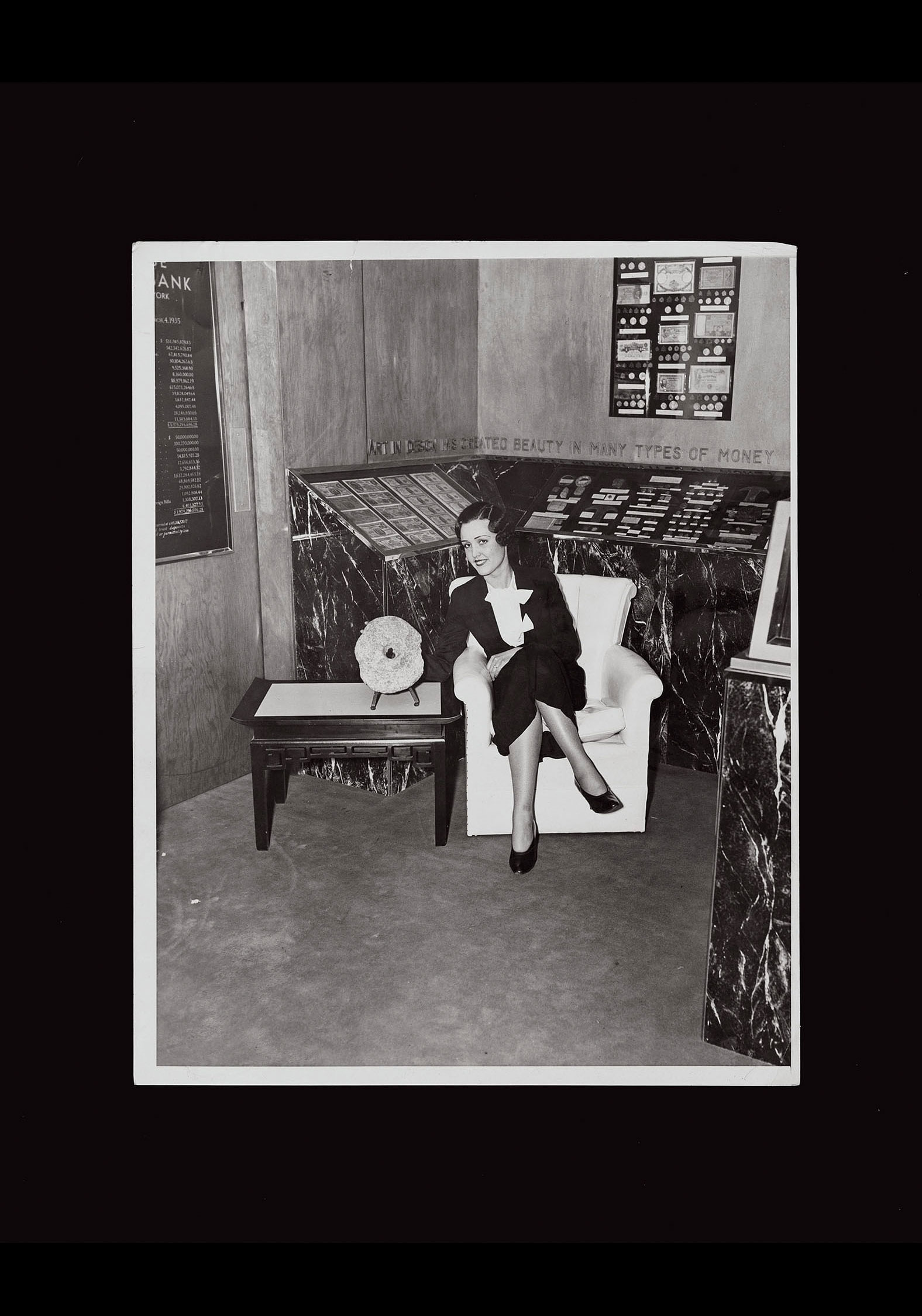
Miss Verna Long poses with a 12 pound Rai stone from the island of Yap at the Chase National Bank exhibit, 1935. Cut-line reads “Miss Verna Long, who is a typical consumer at the Industrial Arts Exposition, learns that a 12 pound stone coin from the island of Yap will buy 500 coconuts but is a bit awkward for pockets and purses, while she inspects specimens of curious and historic monies at the Chase National Bank exhibit in the Exposition.” Photographer unknown. Collection of Nicholas Mangan.
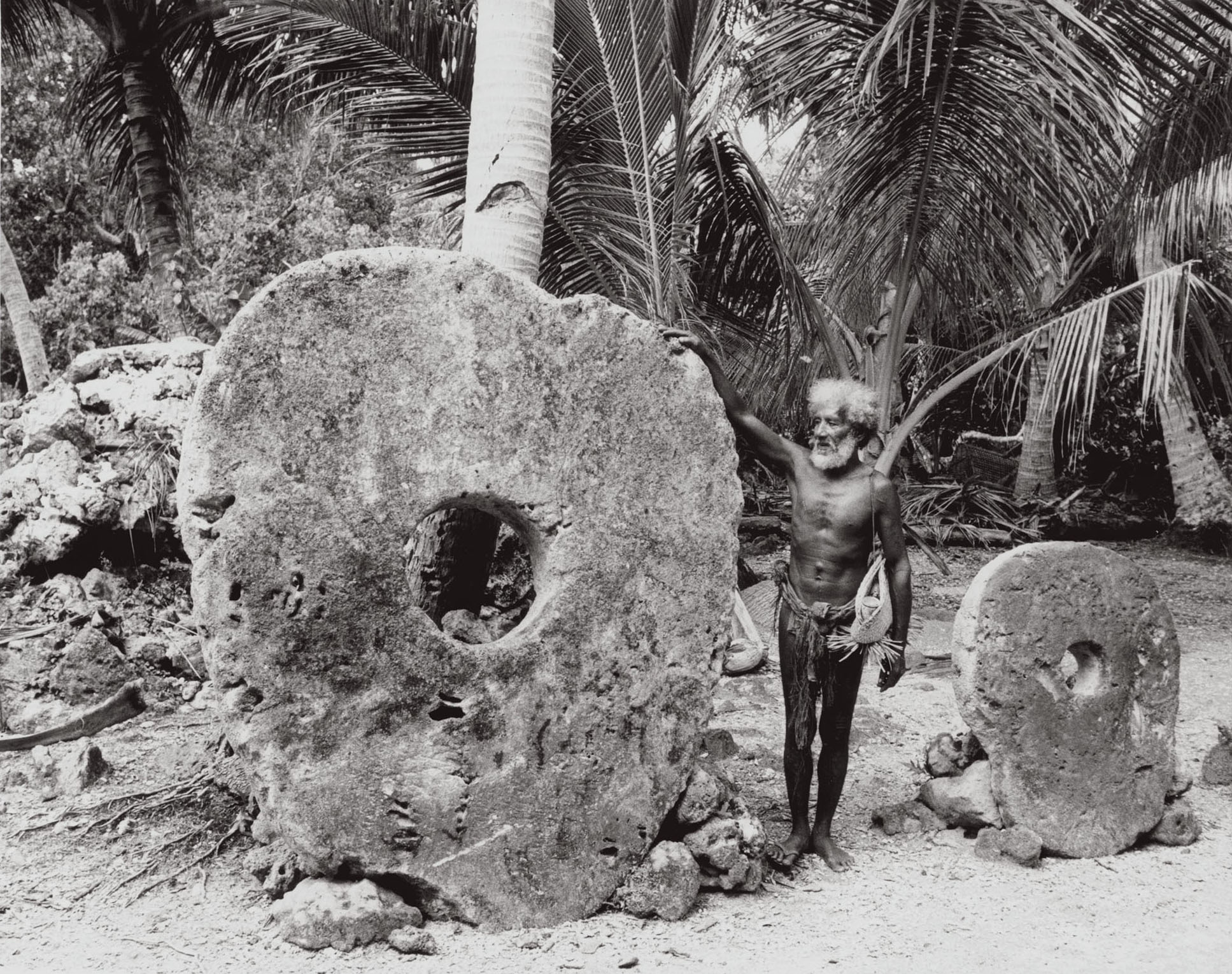
Chief Magistrate Anghel Gargog in costume wearing basket near two coral money discs, 1962. Photographer: Roy H. Goss. National Anthropological Archives, Smithsonian Institution, Washington, D.C.
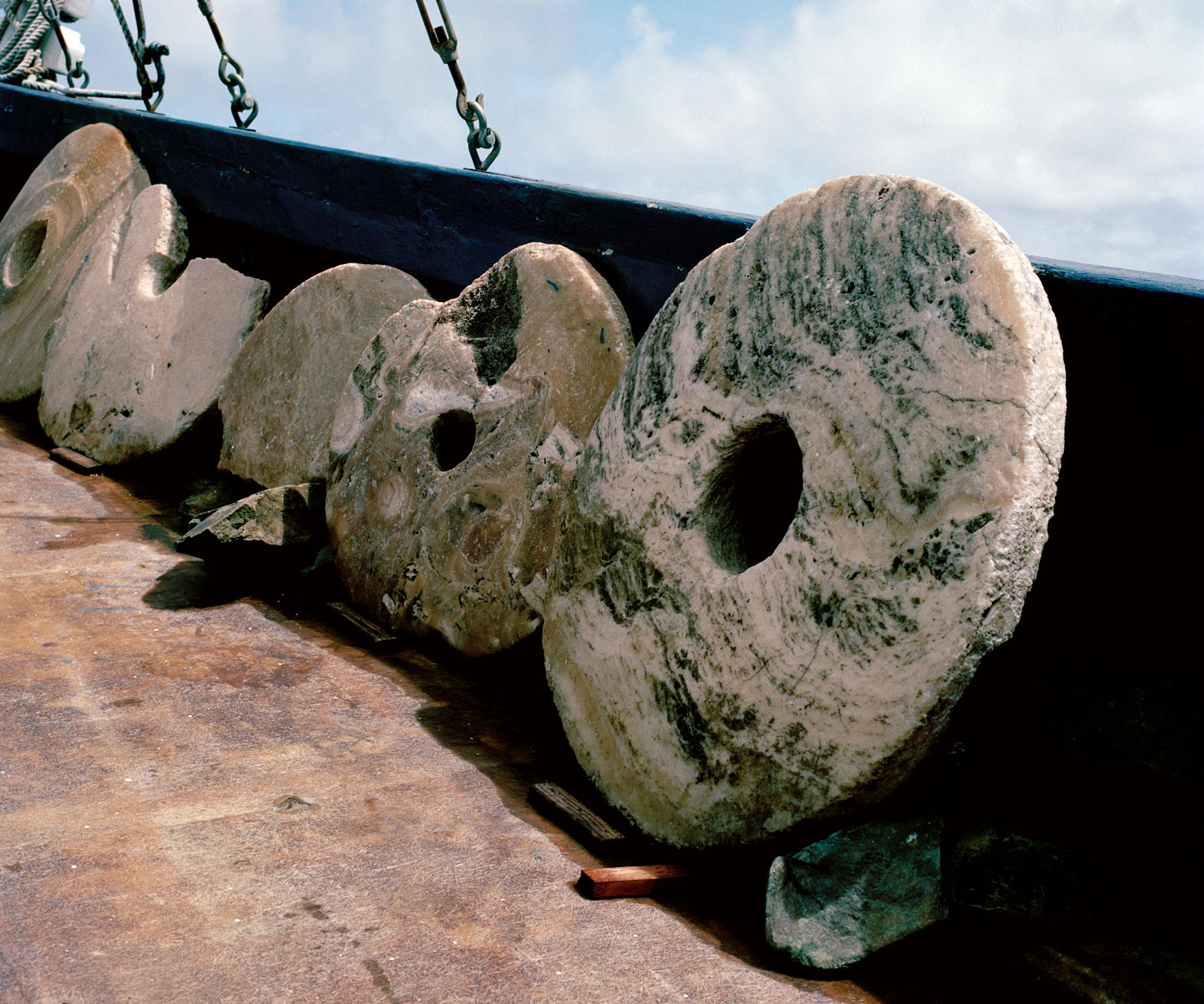
O'Keefe stones aboard SV Mnuw junk ship, Colonia, Yap, Micronesia, 2016. Photo: Nicholas Mangan.

Bank of Detroit Museum of Money guide Lynn Wesson explains Yap money to museum visitors, 1960. Photographer unknown. Collection of Federated States of Micronesia Library of Congress.
Limits to Growth (Part 1) begins by staging a comparison of two virtual monetary currencies: the contemporary cryptocurrency, Bitcoin, and the more ancient Yapese currency, Rai. While bitcoins are virtual, and in a sense immaterial, Rai are made of stone and are often very large, weighing several tonnes. Bitcoins are minted by computers solving complex algorithms, often collectively – working in a ‘blockchain.’ In order to ‘mint’ Bitcoins, however, vast quantities of energy are consumed by the computers processing the algorithms as they labour to verify and record transactions. Processor farms must labour day in, day out to keep the network alive. So although Bitcoin’s medium of exchange is virtual, it remains – like Rai – bound to the physical world.
To make the first iteration of Limits to Growth, A Bitcoin mining rig was installed in the Museums basement. Money mined by the rig has been used to pay for the production of the large-format photographs of Rai stone coins included in the exhibition. This series of photographs have an indexical relationship to the value created and energy consumed by the Bitcoin mining taking place below. They will continued to accumulate over the exhibition’s duration as the rig mined for Bitcoin.
My interest in Bitcoin was piqued by the use of terminology such as ‘mining’ and ‘workers.’, trawling through various online forums I found someone in Australia who was actually mining bitcoin, despite the fact that the country’s high electricity costs render it unprofitable. I came across a discussion taking place within a remote community in Western Australia that was established by a mining company to service an actual mine. As is common practice, the company provided free housing and electricity to workers, as well as much needed air-conditioning in the hot climate. In the online thread, a worker from the mine suggested that a Bitcoin rig could be set up at his company-funded housing in order to take advantage of this free electricity and cooling. This physical mine could indirectly provide the climate for profitable virtual mining in Australia. This situation of a parasitical economy and how the potential overlay of the physical and the dematerialised might function in relation to resource extraction was of particular interest.
Limits to Growth includes an underwater video of a Rai stone lying on the bottom of the Miil Channel off the northwest coast of Yap. The sound of a human breathing through a scuba apparatus is taken directly from the video. The accompanying live stream of several CCTV cameras linked the gallery to the activity of the Bitcoin mining rig in the basement. The sound that the Bitcoin miners produce mixes with the noise of the building’s air-conditioning system, which provides ideal temperature and airflow control, keeping the miners from overheating. as such I wanted to integrate a sense of the Museum’s existing air circulation infrastructure with the body of the diver in the video. Both allude to the presence of closed systems and the notion of the necessity of circulation in any currency.

Nicholas Mangan, Limits to Growth, 2016, hand-printed C type photographs, 120 x 120 cm each. Installation view, Monash University
Museum of Art, Melbourne, 2016. Photographer: Andrew Curtis.
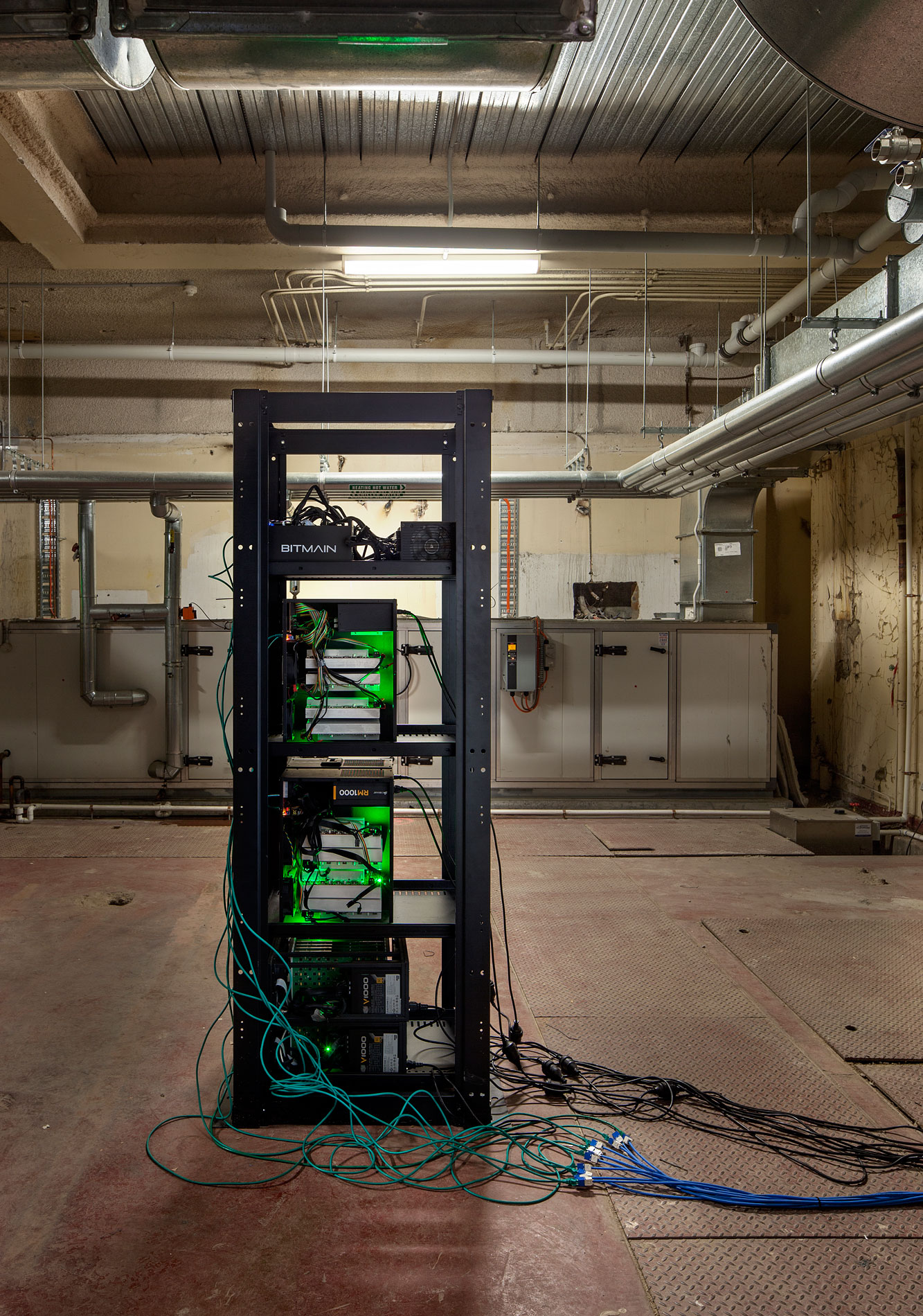
Nicholas Mangan, Limits to Growth, 2016, 9 terrahash Bitcoin ASIC mining rig. Installation detail, basement boiler room of Monash University Museum of Art, Melbourne, 2016. Photographer: Andrew Curtis.
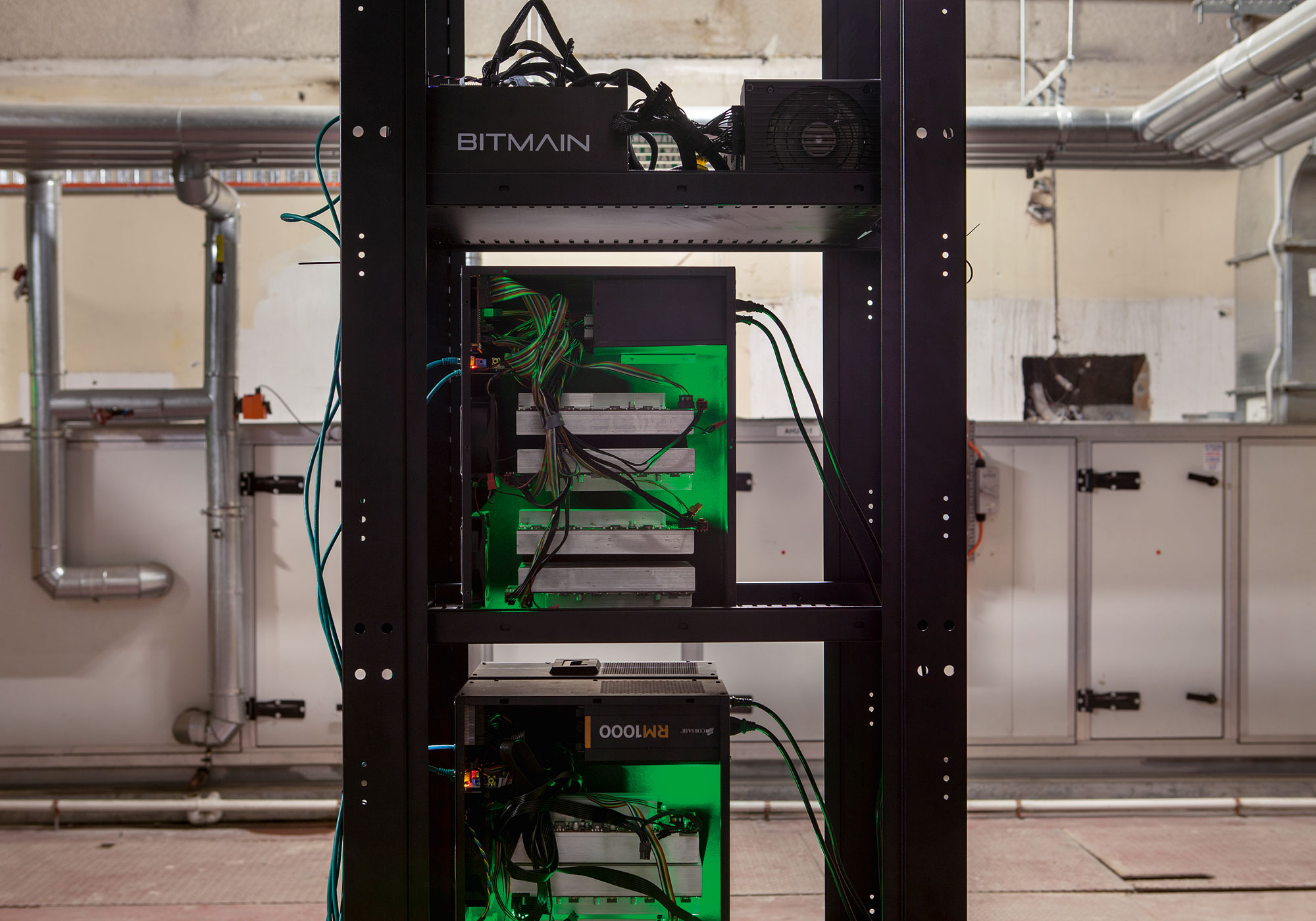
Nicholas Mangan, Limits to Growth, 2016, 9 terrahash Bitcoin ASIC mining rig. Installation detail, basement boiler room of Monash University Museum of Art, Melbourne, 2016. Photographer: Andrew Curtis.
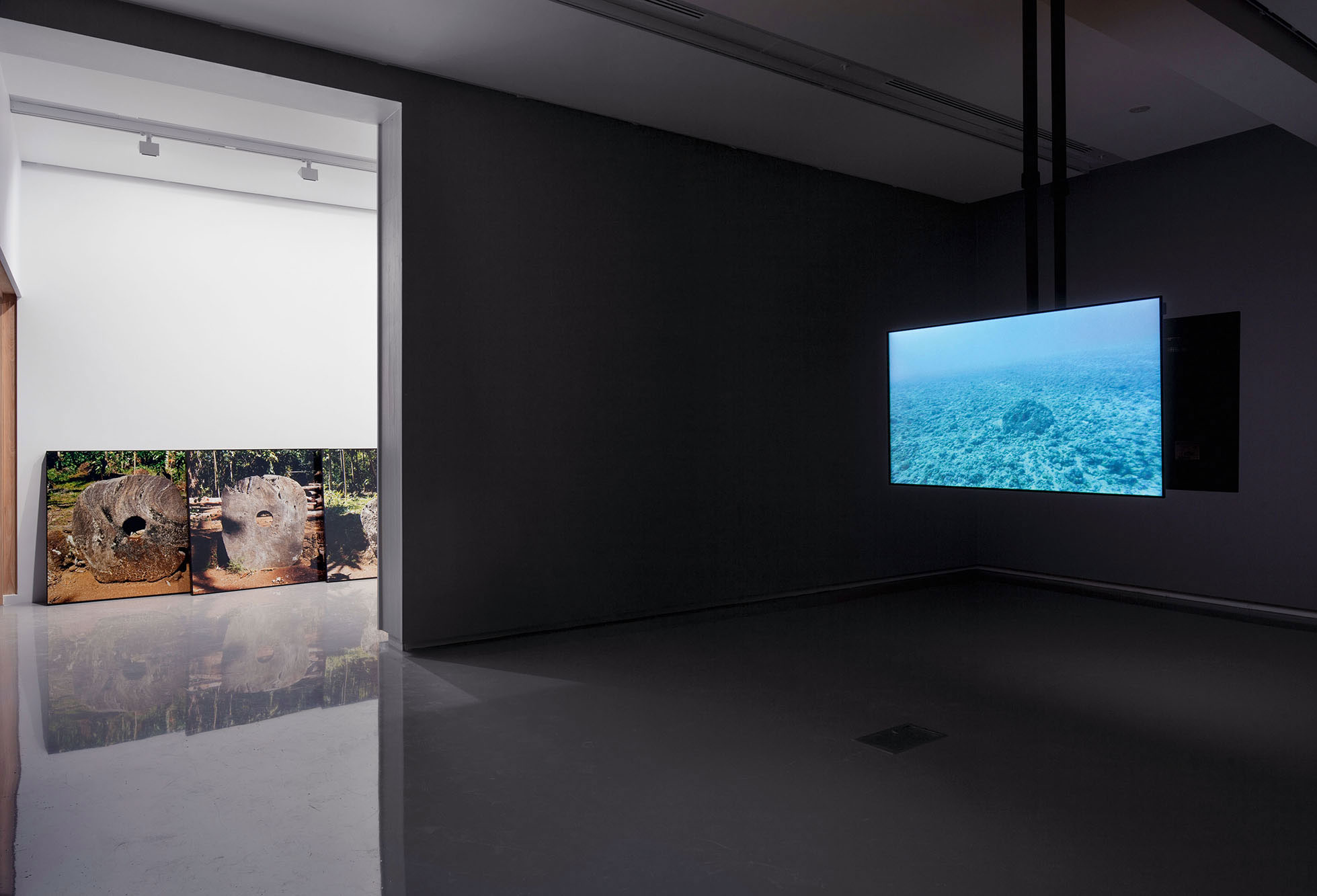
Nicholas Mangan, Limits to Growth, 2016. Installation view, Monash University Museum of Art, Melbourne, 2016. Photographer: Andrew Curtis.

Nicholas Mangan, Limits to Growth, 2016, single channel HD video, sound, colour, 7:56, continuous loop. Installation view, Monash University Museum of Art, Melbourne, 2016. Photographer: Andrew Curtis.
Limits to Growth (Part 2) – Numismatics: a study of dead and dying currencies and the true value of waste.
![_Limits to Growth [Part 2] – Numismatics: a study of dead and dying currencies and the true value of waste._ 5 x Antminer S7 ASIC miners, 2 x fans, HP 44” plotter printer, 55” LED Monitor, HD Video, Sound - Duration 7:56, Digital prints. 11th Gwangju Biennale, The Eighth Climate, South Korea, 2016.](https://nicholasmangan.com/content/4-selected-works/3-limits-to-growth/lg2-1.jpg)
Limits to Growth [Part 2] – Numismatics: a study of dead and dying currencies and the true value of waste. 5 x Antminer S7 ASIC miners, 2 x fans, HP 44” plotter printer, 55” LED Monitor, HD Video, Sound - Duration 7:56, Digital prints. 11th Gwangju Biennale, The Eighth Climate, South Korea, 2016.
![_Limits to Growth [Part 2] – Numismatics: a study of dead and dying currencies and the true value of waste._ 5 x Antminer S7 ASIC miners, 2 x fans, HP 44” plotter printer, 55” LED Monitor, HD Video, Sound - Duration 7:56, Digital prints. 11th Gwangju Biennale, The Eighth Climate, South Korea, 2016.](https://nicholasmangan.com/content/4-selected-works/3-limits-to-growth/lg2-2.jpg)
Limits to Growth [Part 2] – Numismatics: a study of dead and dying currencies and the true value of waste. 5 x Antminer S7 ASIC miners, 2 x fans, HP 44” plotter printer, 55” LED Monitor, HD Video, Sound - Duration 7:56, Digital prints. 11th Gwangju Biennale, The Eighth Climate, South Korea, 2016.
![_Limits to Growth [Part 2] – Numismatics: a study of dead and dying currencies and the true value of waste._ 5 x Antminer S7 ASIC miners, 2 x fans, HP 44” plotter printer, 55” LED Monitor, HD Video, Sound - Duration 7:56, Digital prints. 11th Gwangju Biennale, The Eighth Climate, South Korea, 2016.](https://nicholasmangan.com/content/4-selected-works/3-limits-to-growth/lg2-3.jpg)
Limits to Growth [Part 2] – Numismatics: a study of dead and dying currencies and the true value of waste. 5 x Antminer S7 ASIC miners, 2 x fans, HP 44” plotter printer, 55” LED Monitor, HD Video, Sound - Duration 7:56, Digital prints. 11th Gwangju Biennale, The Eighth Climate, South Korea, 2016.
Limits to Growth (Part 3) – Letter to Rai